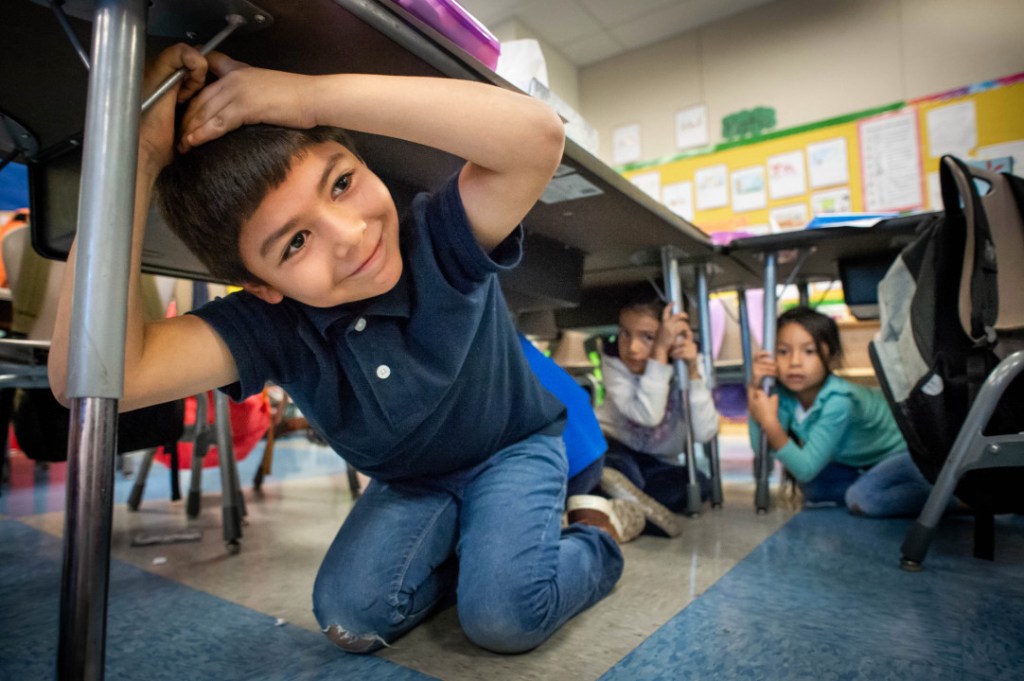
When some 10.4 million Californians “drop, cover and hold on” Thursday morning, the ground may not be shaking. But the drill will help ensure that participants are prepared for the next big earthquake the state faces.
Coinciding with the 35th anniversary of the destructive Loma Prieta earthquake, which killed 63 people, injured 3,757 more and caused billions of dollars’ worth of damage across the region, this year’s Great California ShakeOut urges Californians to practice what they will do in the case of another dangerous quake — a disaster experts say is inevitable and perhaps even overdue.
In 1989, the magnitude-6.9 earthquake caused the collapse of the Cypress Freeway in Oakland and a partial collapse of the eastbound span of the Bay Bridge, and left 16,000 homes uninhabitable.
RELATED: Oakland Tribune’s Pulitzer Prize-winning photos of the 1989 Loma Prieta earthquake
Officials said Wednesday that more than 10 million of the state’s residents had already signed up to participate in the drill. Users of the MyShake app will get an alert for the drill at 10:17 a.m. Thursday morning.
“We saw bridges collapse, big hits to infrastructure, injuries and, unfortunately, loss of life,” said Derek Lambeth, the program manager in earthquake early warning for the Governor’s Office of Emergency Services. “With the big earthquake that is always possible, people should take solace that we have technology out here that can help and give us a heads up, and we’ve been building better as a state in general since those times.”
Thirty-five years later, California is more prepared for a temblor as new buildings have been built with shaking ground in mind and older buildings have been retrofitted to be seismically safe, but it is still important to practice a safe response to an earthquake, experts said.
“There are a lot of different reactions. People may be prone to panic,” said Ben Deci, senior media officer at the California Earthquake Authority. “ShakeOut is a chance for everybody to sort of practice in advance, to drill and to drill the right way.”
Some old advice, such as standing in doorways, is outdated and less safe than dropping and covering.
“We would expect most buildings to withstand a large earthquake, but it’s unpredictable,” said Lambeth. “As things have gotten better with how we build and retro seismically fit, the doorways are now actually the weakest parts.”
People should also avoid going outside during an earthquake.
“It’s not the shaking of the ground that tends to hurt people, it’s the manmade structures,” Deci said. “You’re making yourself more vulnerable. If you run outside, things like masonry and chimneys can fall, and there can be flying debris.”
“We’re really trying to not only make sure people know the right thing to do, (but also) make sure people understand that they may have learned the wrong thing to do, and they need to reprogram themselves to take the right steps,” Deci added.
With the free MyShake app, which is part of the California Earthquake Early Warning System, residents can receive warnings for earthquakes before the shaking begins – sometimes up to tens of seconds before, allowing them to prepare before strong shocks arrive.

















































